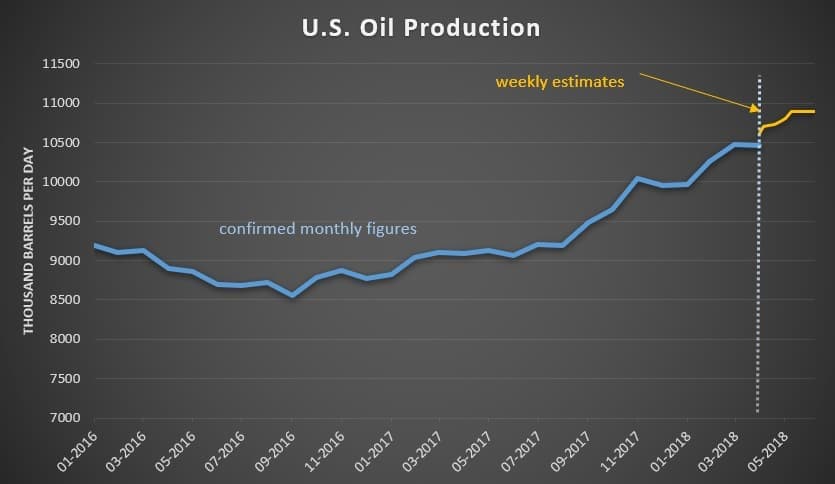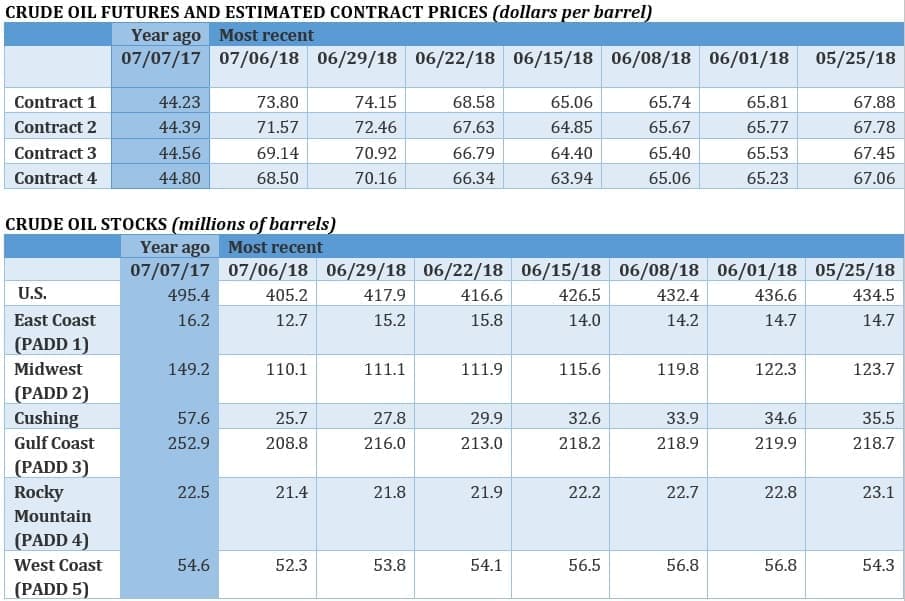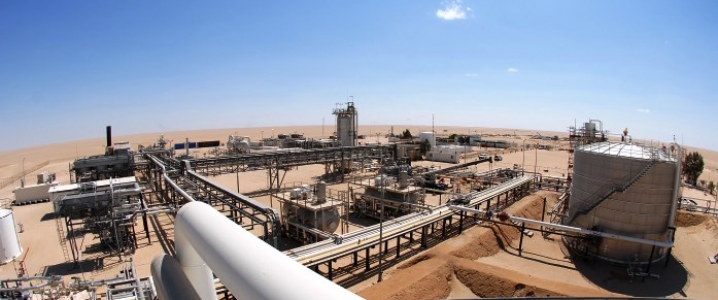The oil market took a beating this week, with the return of Libyan supply weighing on crude prices.

(Click to enlarge)

(Click to enlarge)

(Click to enlarge)

(Click to enlarge)

(Click to enlarge)

(Click to enlarge)

(Click to enlarge)
Friday, July 13, 2018
Oil prices held steady after Wednesday’s steep selloff, with the return of Libyan supply keeping prices in check despite reports of a tight global market.
IEA: oil market “stretched to the limit.” The IEA said on Thursday that the oil market was tightening significantly and that even though higher production from OPEC was “very welcome,” it would cut into limited spare capacity, which could become “stretched to the limit.” Outages around the world are piling up and “we see no sign of higher production from elsewhere that might ease fears of market tightness,” the IEA wrote.
Libya to restart export terminals. Oil prices have climbed over the last few weeks in large part because nearly 700,000 bpd was shut down in Libya. However, that changed this week when the National Oil Corp. moved to lift force majeure on several export terminals, and said that it would begin restoring the disrupted supply. Oil prices fell sharply on the news, declining by more than 6 percent on Wednesday.
Russia says OPEC+ could increase by more than expected if needed. If the oil market needs more oil, the OPEC+ coalition will provide it, according to Russia. “I can’t rule out that if there is a need for more than 1 million barrels we will be able to quickly discuss it all together and make all necessary decisions,” Russian energy minister Alexander Novak told reporters in Moscow on Friday. OPEC+ has “all needed tools,” if necessary, he said. Related: This Oil Price Crash Was Just A Correction
Cheniere and CME Group launch LNG contract. CME Group is developing the first physically deliverable U.S. LNG futures contract, which is located at Cheniere Energy’s (NYSE: LNG) Sabine Pass LNG facility in Louisiana. The launch date was not disclosed but the contract will trade on the New York Mercantile Exchange. The futures contract is an indication that the trade in LNG is growing quickly, and analysts expect trade volumes to grow by about 3 percent per year through 2050. The U.S. is expected to become the largest exporter of LNG in the 2020s, and a futures contract will help increase market liquidity (no pun intended).
India’s largest refiner: OPEC needs to lower prices or demand is in jeopardy. The chairman of Indian Oil Corp., the country’s largest refiner, warned that long-term demand is highly price sensitive. “Demand cannot be seen in isolation to prices, especially for a price sensitive market like India,” Sanjiv Singh said, according Bloomberg. “You may not see an impact on demand in the short term, but in the long term, definitely it will have implications.”
U.S. oil exports to India jump because of Iran sanctions. India is one of the largest buyers of Iranian oil and the U.S. government has been urging India to cut back. India is starting to replace Iranian oil with crude from the United States. U.S. oil exports to India are expected to hit 15 million barrels year-to-date in July, up from 8 million barrels for the full year in 2017. Meanwhile, India’s imports of Iranian oil fell by 15.9 percent in June compared to a month earlier.
U.S. hints at leniency on Iran sanctions. After a few weeks of very tough rhetoric about Iran sanctions, U.S. Secretary of State Mike Pompeo signaled a softer line this week, noting that a lot of countries could request waivers. "We’ll consider it,” he said. High gasoline prices are likely putting pressure on the U.S. government to slow down on its campaign to shut in all of Iran’s oil exports.
High gasoline prices raise concerns for U.S. economy. Gasoline demand has flattened out, and some economists are watching energy prices and wondering about the health of the U.S. economy. “People are on the lookout for a downturn,” Joseph LaVorgna, chief economist for the Americas at Natixis, told the WSJ. “Tight monetary policy combined with rising energy costs is typically not a good development for U.S. households.” Airlines are hiking fares, higher energy costs could push up inflation, and consumers could curtail retail spending if expensive gasoline cuts into discretionary spending.
ADVERTISEMENT
Shale drillers eye the Eagle Ford as Permian hits a wall. The pipeline bottleneck in the Permian is reviving interest in the Eagle Ford. Oil and gas from South Texas can sell for higher prices because the region does not suffer from the same midstream constraints. Recent deals in the Eagle Ford signal an uptick in interest, according to S&P Global Platts.
ConocoPhillips increases share repurchasing program by $1 billion. ConocoPhillips (NYSE: COP) said on Thursday that it would increase its share repurchasing program by $1 billion. The company spent $3 billion from 2016 and 2017 on repurchases, and will spend another $3 billion this year (up from the planned $2 billion).
Related: Spare Capacity: The Biggest Mystery In Oil Markets
Trump tariffs hit rare earths that U.S. needs. China is a major producer of rare earth elements, critical materials that are used in high-tech manufacturing and strategic technologies. “The Chinese mine the rare-earths, they separate them, they refine them. This is the long-term trend and a 10 percent tariff will not do anything to stir any domestic production in the U.S.” Jack Lifton, the Michigan-based founder of rare earth consulting service Technology Metals Research LLC, told Bloomberg. “China produces as much as 80 percent of the world’s refined cobalt, and we’ve just raised our price by 10 percent,”
U.S. offers exemptions to Chevron and Shell on steel tariffs. In a closely-watched move, the U.S. granted exemptions to Chevron (NYSE: CVX) and Royal Dutch Shell (NYSE: RDS.A) from the steel tariffs, allowing them to avoid paying the 25 percent tariff on imported steel. The oil and gas industry has pleaded for leniency because as much as three-quarters of the steel that goes into pipelines, for instance, comes from abroad. The exemptions were only narrowly granted to those two companies, but they signal a willingness by the Trump administration to offer exemptions for oil and gas.
Ireland votes to divest from fossil fuels. Ireland became the first country to pass legislation to divest from fossil fuels. The Irish parliament passed a bill that calls for the $10.4 billion strategic investment fund to withdraw investments from coal, oil and gas over the next five years.
Total buys LNG unit from Engie for $1.5 billion. Total SA (NYSE: TOT) agreed to purchase the upstream LNG division from Engie SA (EPA: ENGI) for $1.5 billion. The acquisition will make Total the second largest LNG producer after Royal Dutch Shell (NYSE: RDS.A).
By Tom Kool for Oilprice.com
More Top Reads From Oilprice.com:
- Saudi Arabia's Solution To Rising U.S. Gas Prices
- Oil Prices Crash As Libya Resumes Production
- U.S. To Hold Major Oil & Gas Lease Sale In August

















